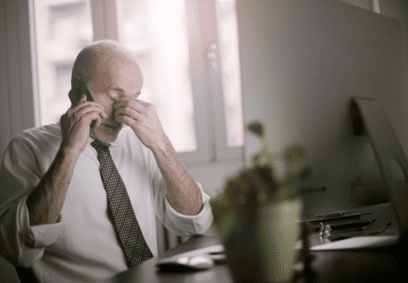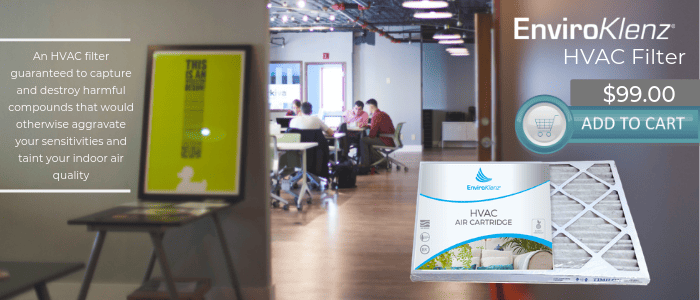Sick Building Syndrome Invading Office: How it Impacts Your Health?
You have said over and over again that your office is making you sick, with many people scuffing it off as a dramatic statement that many people loosely throw out in contempt with their current feelings about their employment. However, your claim may ring true as there are potential factors that can influence your health in relation to your office building. A sudden wave of dizziness, nausea, and overall altered mobility that you experience within your office could mean that the building itself is affecting your health and potentially other employees within this structure – this is known as sick building syndrome.
According to a report conducted by World Health Organization (WHO) in 1984, it was found that up to 30 percent of new and remodeled buildings across the world were subject to excessive complaints related to the indoor air quality of the office building. Indoor air quality, along with SBS (Sick Building Syndrome) have become both an increasing issue as we learn more and more about the potential health risks and dangers of poor indoor air quality.
What are the potential effects of sick building syndrome and what can you do to combat the issues that this environmental condition places on the indoor air quality?
What is Sick Building Syndrome?
 Sick building syndrome (SBS) is a situation where occupants within a building experience acute health effects that appear to be linked to time spent in a building. However, identifying the actual illness or cause of this illness is hard to specifically classify. People within a building can start experiencing and vocalizing issues either inside the whole building or in specific rooms that can spark a reaction of symptoms in those exposed. SBS was first recognized in the early 1970s and occurred when unexplained symptoms began to develop in relation to time spent in a certain building. The cause behind these unknown symptoms are usually undetectable and unrecognizable but it could be either biological, chemical, or physical that are impacting the health of those people exposed to the building.
Sick building syndrome (SBS) is a situation where occupants within a building experience acute health effects that appear to be linked to time spent in a building. However, identifying the actual illness or cause of this illness is hard to specifically classify. People within a building can start experiencing and vocalizing issues either inside the whole building or in specific rooms that can spark a reaction of symptoms in those exposed. SBS was first recognized in the early 1970s and occurred when unexplained symptoms began to develop in relation to time spent in a certain building. The cause behind these unknown symptoms are usually undetectable and unrecognizable but it could be either biological, chemical, or physical that are impacting the health of those people exposed to the building.
Indoor air quality can play a major role in relation to sick building syndrome, specifically high levels of indoor air pollution within the indoor air space. When a building is contaminated with high levels of pollutants in the air it can sometimes lead to exacerbated symptoms and progression of existing health conditions in those exposed to the tainted air quality.
Sick Building Syndrome vs Building Related Illness
Most likely if you have heard of sick building syndrome (SBS) than you will have also heard of the similar building related illness (BRI) that are both commonly interchangeable. Although these two conditions are similarly related, they both have distinct differences that must be noted when trying to determine between these two health conditions in an indoor office building. Building-related illnesses refers to reasonably well characterized human illnesses that are caused by indoor environmental factors that can be related to the clinical and laboratory findings in those building occupants with health complaints based on valid findings such as mold or other airborne building contaminants in the indoor space.
In comparison, the symptoms that are elicited from SBS can be very similar to BRI. However, building-related illnesses can be more severe and can actually even cause serious ailments like lung and respiratory conditions.
When it comes to sick building syndrome there are many issues that surround this condition – including the fact that many medical communities do not recognize this condition. Some experts even think that SBS symptoms are brought upon from potential illnesses contracted outside of the building such as allergies, psychological factors, and even job-related stress from current employment. Whereas those who do identify this condition have suggested that it is caused by a reaction to specific things in a building such as mold, smoke, and maybe even off-gassing in different ways in the building. Sick building syndrome has also been linked to people with extremely high sensitivities to even low concentrations of pollutants in the air – these individuals are referred to as MCS (Multiple Chemical Sensitivity) sufferers.
Sick Building Syndrome Symptoms
The effects of sick building syndrome can impact the skin, respiratory system, and neurological system when exposure occurs to these environments. Among the potential symptoms that one can experience from sick building syndrome includes the following:
 Throat irritation
Throat irritation- Runny nose
- Tightness in the chest
- Headaches
- Breathing difficulties
- Allergy-like symptoms
- Dizziness
- Fatigue
- Nausea
- Body aches
- Fever
- Chills
- Dry, itchy skin
My Job is Making Me Sick: Causes of SBS
If you have determined that you are suffering from sick building syndrome, the next thing that will be important to determine is the actual cause of this condition in your office environment. The key indicators of SBS will include complaints of varying symptoms when inside the office and immediate relief among exiting the environment. When this is the case you can than determine what is eliciting this condition in the building.
The most common causes of SBS in an office building includes the following:
Poor Ventilation
One of the major reasons behind SBS, inadequate air ventilation inside a personal indoor environment like a building can be a potential cause of health issues in those building occupants. Poor ventilation can be a result of ineffective heating, ventilating, and air conditioning (HVAC) systems. When the ventilation is poor in a building it will lead to an accumulation of pollutants in the air that can lead to significant levels of contaminants within the indoor air space.
Biological Contaminants
Mold, bacteria, and viruses are all biological contaminants that can be found within the air of an indoor environment and can significantly impact the quality of the air. Often times these contaminants will be found in air ducts or humidifiers and spread throughout the air of this enclosed space and elicit symptoms in those exposed. Some of the most common symptoms associated with biological contaminants includes muscle aches, cough, chest tightness, chills, fever, and even allergic reaction symptoms.
Chemical Contaminants
Chemical compounds within a buildings air like volatile organic compounds (VOCs) can be commonly found in a variety of different building materials and substances used like adhesives, upholstery, cleaning agents, and pesticides. When these VOCs enter into the air it leaves building occupants vulnerable to exposure to these contaminants which can potentially adversely impact human health.
Temperature & Humidity
The different temperature and humidity levels present in the air can also spark complaints that may increase other sources of SBS symptoms in those exposed.
Sick Building Syndrome Prevention & Treatment
 Sick building syndrome is a tricky condition to both prevent and treat, as there are many unanswered questions when it comes to the background of this health condition. While there is no actual way to test for SBS in a building, buildings can be tested for pollutants such as formaldehyde, radon, asbestos, black mold, and lead that can impact human health upon exposure. In some cases, building practices will need to be readjusted and changed to help promote increased air pollution in the indoor air space.
Sick building syndrome is a tricky condition to both prevent and treat, as there are many unanswered questions when it comes to the background of this health condition. While there is no actual way to test for SBS in a building, buildings can be tested for pollutants such as formaldehyde, radon, asbestos, black mold, and lead that can impact human health upon exposure. In some cases, building practices will need to be readjusted and changed to help promote increased air pollution in the indoor air space.
Some practices that will need to be implemented will include air filters, clearing the air circulation system of fungal contaminants, and filtering out irritant sources from the building – such as using correct building materials and construction methods that will cut down on SBS symptoms and pollutants in the environment.
Improve Indoor Air Quality with Quality Air Filters
Improving the indoor air quality within your office building is always a good thing, and something that should be considered whether your building is causing SBS or not. There are two ways to improve indoor air quality and that is by improving ventilation in the office and eliminating sources of air pollution within the air space. It is necessary to perform routine maintenance to your HVAC system and changing and replacing the filters as necessary.
HVAC filters can play a key role in the promotion of clean indoor air in a building and neglecting these filters will easily create a polluted environment. There are many different types of filters available to consumers ranging in cheap low function filter to higher priced more efficient filters that will last longer in your air handling system.
The EnviroKlenz HVAC Filter works at a superior level than the standard HVAC filters that we typically use within our air handling machine. Standard HVAC filters will remove bacteria and particles like dust and dander from the air to keep the air clean and while that is a good thing, it fails to properly mitigate VOCs and toxic vapors from the air like the EnviroKlenz HVAC. EnviroKlenz uses an earth mineral technology to capture and destroy harmful compounds that would otherwise aggravate your sensitivities. This EnviroKlenz HVAC filter is free of chemicals and masking agents, and does not use carbon within its material.

Comments
Post a Comment